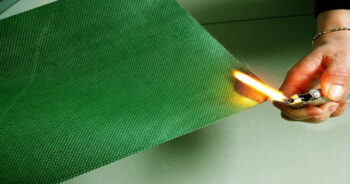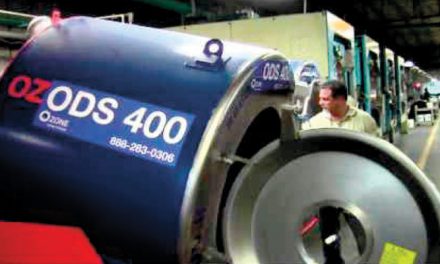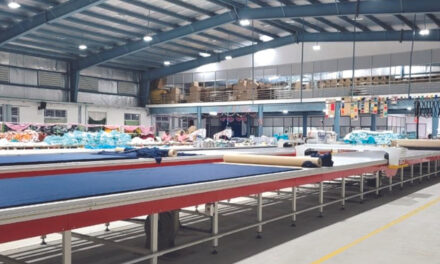 The global fire-resistant fabrics market is anticipated at $ 3.1 bn in 2022. Demand is likely to remain high for fire-resistant fabrics during the assessment period. This is due to the rapid technological advancement in manufacturing technology & rapid rate of industrialization and garnering $ 6.1 bn in 2033, recording a CAGR of 6.3% from 2023 to 2033. The market is likely to secure $3.3 bn in 2023.
The global fire-resistant fabrics market is anticipated at $ 3.1 bn in 2022. Demand is likely to remain high for fire-resistant fabrics during the assessment period. This is due to the rapid technological advancement in manufacturing technology & rapid rate of industrialization and garnering $ 6.1 bn in 2033, recording a CAGR of 6.3% from 2023 to 2033. The market is likely to secure $3.3 bn in 2023.
Key Factors Shaping the Demand Outlook of the Fire Resistant Fabrics Industry:
• Rising application in the various end-use industry to augment the growth of the fire-resistant fabrics market
• Increasing awareness about the advantages of the fire resistant fabrics elevates the demand
• Widening application of fire-resistant fabrics in the defense & public safety services sector is expected to spur the growth
• Growing advances in technology are expected to create new growth prospects for fire resistant fabrics manufacturers
The rapid growth of industries such as oil and gas, chemicals, and manufacturing has created a higher demand for fire-resistant fabrics. These industries often involve hazardous processes and materials, making fire-resistant fabrics crucial for worker safety.
Increasing awareness of the importance of workplace safety in organizations and individuals led to the adoption of fire-resistant fabrics in industries where workers are exposed to fire and heat-related risks.
The increasing research and development efforts by leading players have led to the development of advanced fire-resistant fabrics that offer improved protection, comfort, and durability. These technological advancements have expanded the range of applications for fire-resistant fabrics. The fire-resistant fabrics market is projected to show a noteworthy growth of US$ 6.1 billion by the end of the forecast period of 2033.
Which Drivers Underpin Fire Resistant Fabrics Industry Expansion?
Increasing Application in Defense and Public Safety Services to Drive the Growth of the Fire Resistant Fabrics Market
Fire-resistant fabrics play a critical role in defense and public safety applications by providing protection to personnel involved in various operations and emergency response scenarios.
Fire-resistant fabrics used in the defense industry are developed with properties such as flame resistance, heat insulation, durability, and comfort to ensure the safety and performance of personnel in challenging and hazardous situations.
The fire-resistant fabrics provide protection against heat, flames, and arc flashes, minimizing the risk of injury and burns thus they are highly utilized in the oil & gas industry. The growing safety regulation standards in the oil & gas industry also drive the demand for fire-resistant fabrics.
The Growing Technological Advances to Boost the Growth of the Fire-Resistant Fabrics Market
Continuous advancements in fabric technologies have improved the performance and durability of fire-resistant fabrics. Innovations in flame retardant additives, weaving techniques, and fabric blends have resulted in fabrics that offer enhanced fire resistance while maintaining comfort and durability. Technological advancements in the field drive market growth by expanding the applications of fire-resistant fabrics.
Manufacturers of fire-resistant fabrics continue to invest in research and development to enhance the performance of their products. Innovations include the development of fabrics with improved flame resistance, heat insulation properties, and durability. For instance, advancements in aramid fibers, such as Nomex® and Kevlar®, have led to the production of fabrics that offer superior fire resistance and strength.
Why is the United States regarded as a Prominent Market for Fire Resistant Fabrics Market?
Growing Innovations in Manufacturing Techniques to Boost the Growth of the Fire Resistant Fabrics Market in the United States
The global fire-resistant fabrics market is expected to be dominated by North America. The market is anticipated to expand at a CAGR of 6.2% and is expected to accumulate a market value of US$ 1.1 billion over the forecast period. The increasing focus on worker safety and stringent safety regulations in the region are expected to propel the market demand.
The increasing technological advancements and innovation in various sectors and the development of advanced fire-resistant fabric technologies. Manufacturers in the region are investing in research and development to improve the performance, comfort, and durability of fire-resistant fabrics, catering to the specific needs of industries in North America.
Owing to the sustainability concerns in the region manufacturers are focusing on developing fabrics that use recycled fibers, bio-based materials, and environmentally friendly manufacturing processes.
The Start-up Ecosystem: How Key Players Are Opening Frontiers for Future Growth?
New players in the fire-resistant fabrics market PyroTex, Pvilion, and Basofi fibers among others are adopting various marketing strategies such as new product launches, geographical expansion, mergers and acquisitions, partnerships, and collaboration to identify the interest of potential buyers and create a larger customer base.
For instance:
Founded in 2017 – PyroTex is a startup dedicated to developing innovative flame-resistant coatings and treatments for textiles. They aim to improve the fire-resistant properties of fabrics, including enhanced flame retardancy and durability, for various applications such as protective clothing and industrial uses.
Founded in 2011 – Pvilion is a startup that specializes in advanced textiles and fabric structures, including fire-resistant fabrics. They focus on integrating technology and sustainable design into their fabrics, offering solutions for various industries, including architecture, energy, and outdoor applications.
Founded in 2006 – Basofil Fibers is a startup company that develops and manufactures high-performance fire-resistant fibers and fabrics. Their products are designed to offer superior flame resistance and thermal protection for industries such as transportation, aerospace, and military applications.
Who are the Leading Players in the Fire Resistant Fabrics Market?
Prominent players in the fire-resistant fabrics market are DuPont de Nemours, Inc.; Arvind Ltd.; Draper Knitting Company; BGF Industries, Inc.; Agru America, Inc.; among others.
The key players in fire-resistant fabrics are focusing on improved productivity and quality of their products in order to gain more customer base. Key players are working on research & development activities for the effective composition of the material that is to be used for manufacturing.
Other expansion strategies of key players include extensive research & development activities, collaborations, and mergers & acquisitions. Some notable developments are as follows:
DuPont is a well-known company that has been a major player in the fire-resistant fabrics market. They have developed and marketed several fire-resistant fabrics under their brand name Nomex® and Kevlar®. These fabrics are widely used in various industries, including firefighting, military, and industrial sectors.
Teijin Aramid is a subsidiary of the Teijin Group and a leading manufacturer of high-performance fibers, including fire-resistant fabrics. Their flagship product, Twaron®, is a strong and heat-resistant aramid fiber used in the production of fire-resistant fabrics for protective clothing and equipment.
PBI Performance Products is known for manufacturing fire-resistant fabrics using their proprietary fiber, PBI (Polybenzimidazole). PBI fabrics offer excellent flame resistance, heat insulation, and high-temperature stability. They are commonly used in firefighting gear, military applications, and industrial protective clothing.
Future Market Insights













